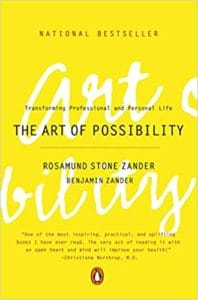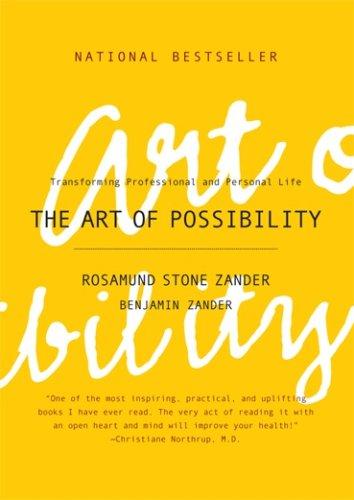 By: Rosamund Stone Zander and Benjamin Zander
By: Rosamund Stone Zander and Benjamin Zander
Reviewed by: Leah Parkhill Reilly
The Premise: Back in 2002, spouses Rosamund Stone Zander and Benjamin Zander wrote a practical and inspirational book gleaned from her work as a psychotherapist and his experience as the conductor of the Boston Philharmonic Orchestra. The book outlines twelve techniques developed by Rosamund over her years of helping clients shift their perspective and mindset in her practice. The Zanders then weave Benjamin’s experiences and anecdotes of his using the twelve techniques as a teacher, speaker and orchestral conductor. The result is a charming and eminently readable book full of wonderful stories but equally full of pragmatic tools that can be immediately applied by the reader. Each chapter is devoted to a different technique and a set of tools to apply the approach which has appeal to most busy leaders these days as you don’t need to read the book in its entirety to get to the punchline. The book ultimately is a very practical guide to creating a growth-oriented mindset within yourself and others.
The Bottomline: Personally, I loved this book on so many levels. For whatever reason, it sat on my shelf since circa 2008 waiting patiently to be read and apparently it took about a decade for me to realize the beautiful lessons that were contained within its covers. I’ve stopped asking myself why it’s taken me so long to read it and I’m just content with the fact that I finally have read it. My current fascination is all about neuroscience and how our perception of the world deeply frames every interaction and affects the outcome of every situation we find ourselves within. This book fed that fascination and gave me several tools and insights that I could immediately apply. Practices on how one consciously shows up as a leader, approaches to shifting perspective about difficult conversations, moving from a binary win-lose worldview to one of contribution; these are just a few examples. There were so many good nuggets. I literally dog-eared numerous pages when I ran out of post-its to mark favourite passages. There were a few points that seemed to stretch a bit long and by the end, I felt like perhaps they could have taken a red pen to the book and cut out a chapter or so. However, overall, I found this to be such an enlightening read. I set it down feeling profoundly moved and inspired to act. Read one chapter and you’ll gain value and insight. Or if you have the luxury of time or a long flight, you can sit down and devour the book in one gulp (my approach).
Recommendation: Recommended for leaders who are looking for new techniques to reframe how they work with others, approach difficult conversations and lead teams.


